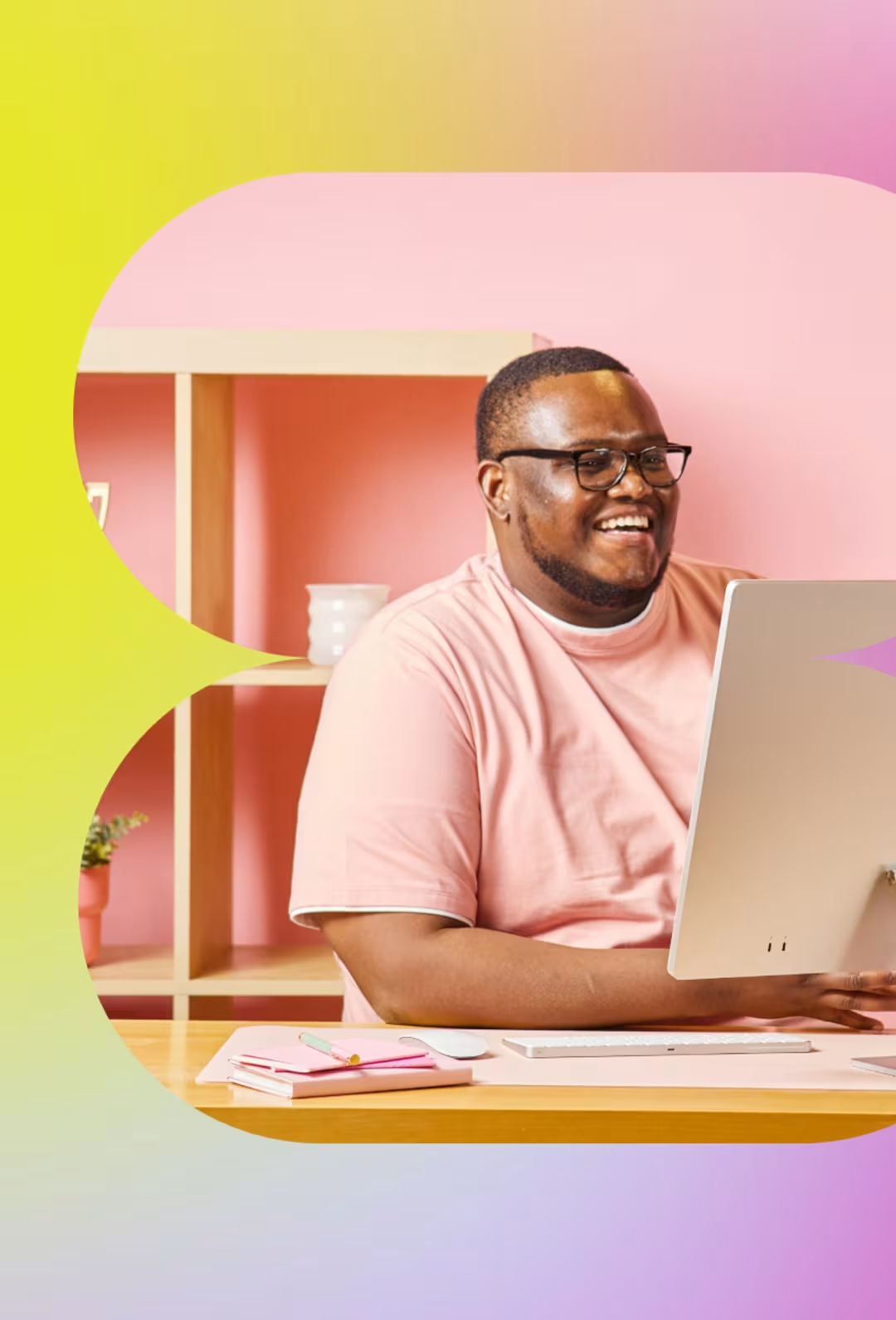Free Video Recording
Record solo or with a sidekick
No studio? No stress. Capture high-quality videos by yourself or with your team—all from your browser.
Trusted by over 375,000 customers
NOW IN BETA
Bring the team on screen
Calling all small-to-medium-sized businesses: Wistia’s Group Recording is perfect for polished updates, podcasts, and panels. Just hit record, invite nine guests, and Wistia takes care of the rest.
Do a triple take
Capture yourself, your screen, your team, or all of the above. Dynamic layouts help you spotlight the people and content that matter most.
Present like a boss
Our built-in teleprompter gives you two ways to nail your lines.
Upload a script
Then adjust the size, scroll speed, and positioning so it works for you.
Script with AI
Not sure what to say? Try our AI-powered script generator.
Presentations
Walk through slides, stay on camera, and keep your message clear—whether you’re presenting solo or sharing the stage.
Product demos
Show off new features or take folks through a workflow. Record your screen and your voice, or bring in a teammate.
Talking head videos
Share expertise, give an update, or recap your week. Add polish with dynamic layouts and customizable branding.
Interviews
With Group Recording (now in beta), you can capture high-quality interviews and podcasts without a studio.
Edit without leaving your browser
No downloading necessary. Everything you record lands right in your Wistia account, ready to trim, tighten, and share.
Learn moreReady to record?
Sign up for freeVideo recording is just the beginning
We’ve got all the tools you need to squeeze more juice out of your videos.

Management
Store, organize, find, and archive your videos in a jiffy.
Playback
We designed our player to be fast, customizable, and compatible with any browser or device.
Embedding
Copy and paste our embed code onto your page for reliable playback on any device.
Video galleries
Build an on-brand page for all your content. No coding required.
Lead generation
Turn your videos into marketing machines.
Webinars
Hosting webinars is now a piece of cake. Preferably red velvet.
Video analytics
Get nerdy with key metrics, heatmaps, and A/B testing at your fingertips.
Marketing integrations
Automatically send video data to your favorite marketing tools.
Podcasting
Upload your pod and we’ll distribute it to top directories like Apple and Spotify.
SEO
We automatically optimize your videos for search to get you more views.
Localization
AI dubbing and translations in 50+ languages.
Frequently asked questions
Get all the As to your FAQs.
What is screen recording?
Screen recording lets you capture what’s happening on your computer screen. You can record your entire screen, a single window, or a specific tab in your browser. It’s a great way to show how something works, whether you’re creating a tutorial, demo, or walkthrough.
With Wistia’s screen recorder, you can also capture your webcam and microphone while recording your screen, so your voice and face guides viewers through the content. If you’re working with others, Group Recording (now in beta) lets you record with up to nine people in one session. It’s perfect for co-hosted demos, interviews, podcasts, and team presentations.
Once you’re done recording, Wistia makes it easy to edit everything in one place. You can trim clips, adjust layouts, and combine screen and webcam footage for a polished, professional video.
How can I record my screen?
There are a bunch of tools you can use to record your computer screen, but Wistia’s free screen recorder makes it super easy. You can record your screen and webcam at the same time, use an AI script generator and built-in teleprompter to stay on message, and polish up your recording with our free video editor. Simply sign in to your Wistia account or use our Google Chrome extension to start recording your screen.
Is online screen recording secure?
Yes! Recording your screen online with Wistia is secure. No one outside of your Wistia account can see your recordings until you’re ready to share them.
Am I able to edit my screen recordings?
Yes, you can edit your screen recordings in Wistia. Just open your recording in our online video editor to switch between layouts, trim content, edit your video with text, stitch in clips from other videos, and add transitions and background music.
How can I record my screen with audio?
With Wistia’s screen recorder, you can select your audio source before you start recording. Wistia sets your audio source to the system default, but you can change it to an external microphone if you prefer.
Can I record with someone else in Wistia?
Yep! With Group Recording (now in beta), you can record with a teammate or guest from anywhere. It’s great for presentations, demos, interviews, podcasts, and more.
Ready to co-create?
Group Recording is now in beta. Let’s get you early access.